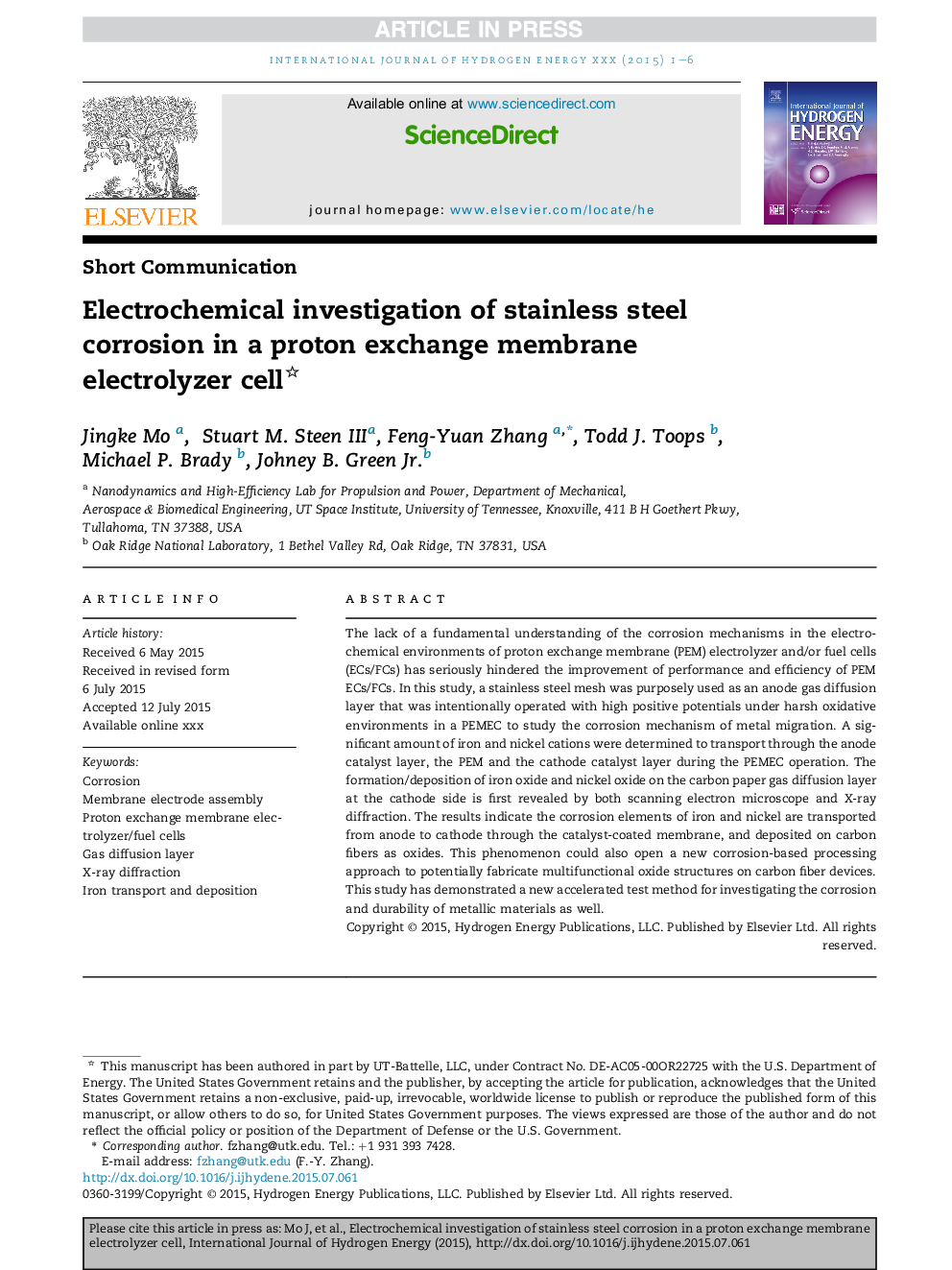| Article ID | Journal | Published Year | Pages | File Type |
|---|---|---|---|---|
| 7714273 | International Journal of Hydrogen Energy | 2015 | 6 Pages |
Abstract
The lack of a fundamental understanding of the corrosion mechanisms in the electrochemical environments of proton exchange membrane (PEM) electrolyzer and/or fuel cells (ECs/FCs) has seriously hindered the improvement of performance and efficiency of PEM ECs/FCs. In this study, a stainless steel mesh was purposely used as an anode gas diffusion layer that was intentionally operated with high positive potentials under harsh oxidative environments in a PEMEC to study the corrosion mechanism of metal migration. A significant amount of iron and nickel cations were determined to transport through the anode catalyst layer, the PEM and the cathode catalyst layer during the PEMEC operation. The formation/deposition of iron oxide and nickel oxide on the carbon paper gas diffusion layer at the cathode side is first revealed by both scanning electron microscope and X-ray diffraction. The results indicate the corrosion elements of iron and nickel are transported from anode to cathode through the catalyst-coated membrane, and deposited on carbon fibers as oxides. This phenomenon could also open a new corrosion-based processing approach to potentially fabricate multifunctional oxide structures on carbon fiber devices. This study has demonstrated a new accelerated test method for investigating the corrosion and durability of metallic materials as well.
Related Topics
Physical Sciences and Engineering
Chemistry
Electrochemistry
Authors
Jingke Mo, Stuart M. III, Feng-Yuan Zhang, Todd J. Toops, Michael P. Brady, Johney B. Jr.,
